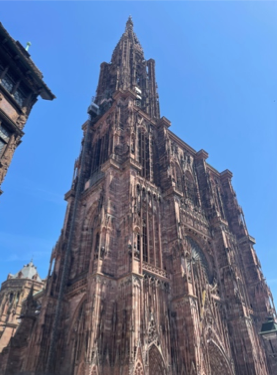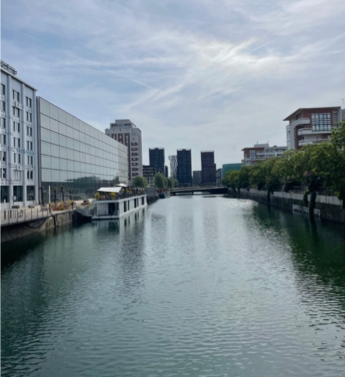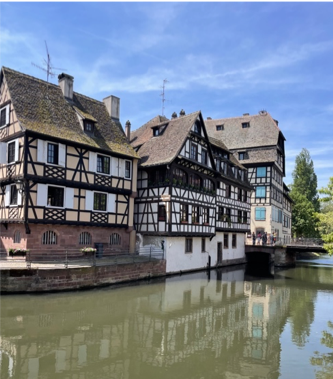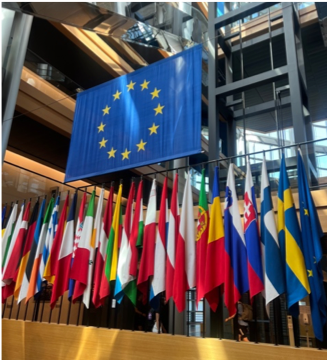Strasbourg: Learnings from Critical Modernization
June 13, 2023
The Cathedral Notre Dame of Strasbourg stands 446 feet tall and is a celebrated symbol of the city. It has stood at the center of Strasbourg, a small city located in eastern France near the German border, for over five centuries. While the cathedral has continuously been the central part of Strasbourg, the surrounding city has gone through significant changes, especially in the last fifty years.
These changes are what we spent time learning about yesterday as part of our Burch Seminar. Our day walking through Strasbourg let us all appreciate their history and understand how critical modernization is to making progress in our cities. The day began by seeing the development of the old harbor of Strasbourg. The harbor used to have a vital role in the region’s commerce and led to the city’s economic strength. Without any use for today’s industry, the city transformed this area into a new, sustainable district. In 2013, they built 650 new housing units, added kindergartens, and established community gardens. There is a wide range of urban greening to help manage stormwater runoff and cool the ground. Along with that, the area limits the use of cars with pedestrian zones. This modern quarter is a far contrast from what the harbor area used to be. As the center of the city’s industry, it used to smell poorly, was run-down, and sat on the low-valued outskirts of the city. This all makes the development we saw that much more impressive.

Afterward, we walked to the old district of Strasbourg to learn about where the tanning industry existed over six centuries ago. It was shocking how this was the most picturesque and touristy part. Our guide for the day, Anka, joked about everyone taking pictures of the area since it’s comparable to people a couple of centuries in the future going to a nuclear power plant for photoshoots and to capture the scenery. Before this tour, I just knew these buildings as famous parts of small French and German villages, and learning the history behind them was fascinating. Anka shared how the tanning industry was water intensive, so the city’s canals were heavily used, causing them to be polluted and carry an odor. You would have never guessed it walking through, and the transformation was somewhat hopeful for the state of our industrial areas.

Our last stop in Strasbourg was the European Parliament where the 705 members from the 27 countries meet. This was a fascinating place to visit since the American governing system is vastly different. This often makes me feel removed from the European system but touring the European parliament gave me a better sense of connection to their governing body. I was impressed with the high level of cooperation between the 27 countries, and this visit opened my mind to the complex system of the EU.

One strength of Europe stems from the ability each country has to respect its past while also having a forward view to change as needed. Strasbourg is a beautiful representation of this. It has sustainably developed its old harbor to create better living spaces while preserving the historic downtown district to maintain the city’s roots. This was all done through the local government and highlighted the influential role city planning decisions have on the community. Strasbourg was a valuable place to visit, and I’m grateful for the lessons the city taught us about the balance between history and sustainable progress.
About the Author
This article was written by Caroline White, Class of ‘26. Connect with her on LinkedIn.
